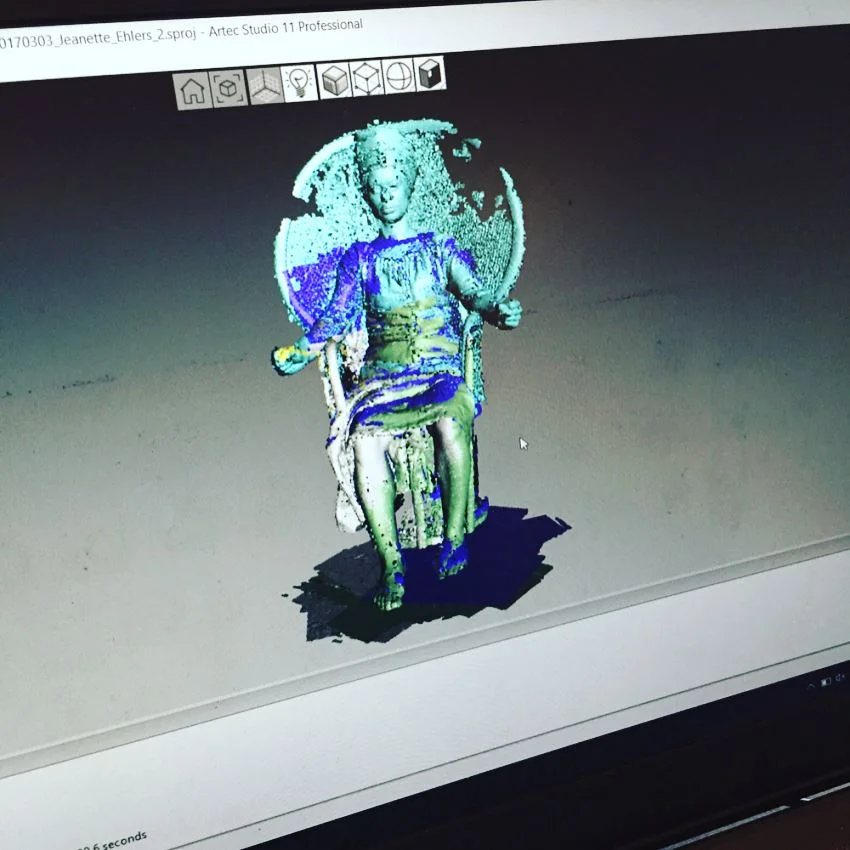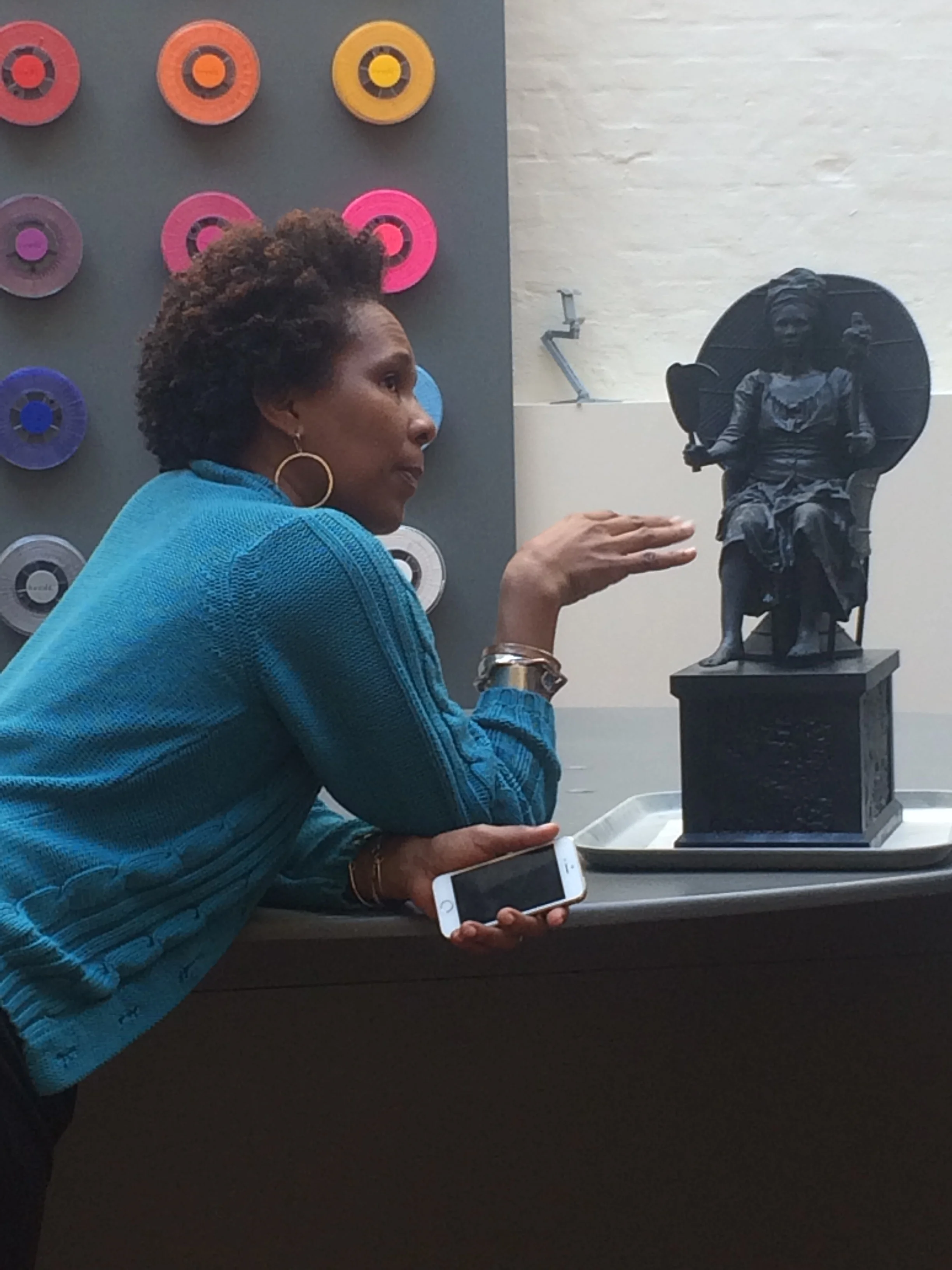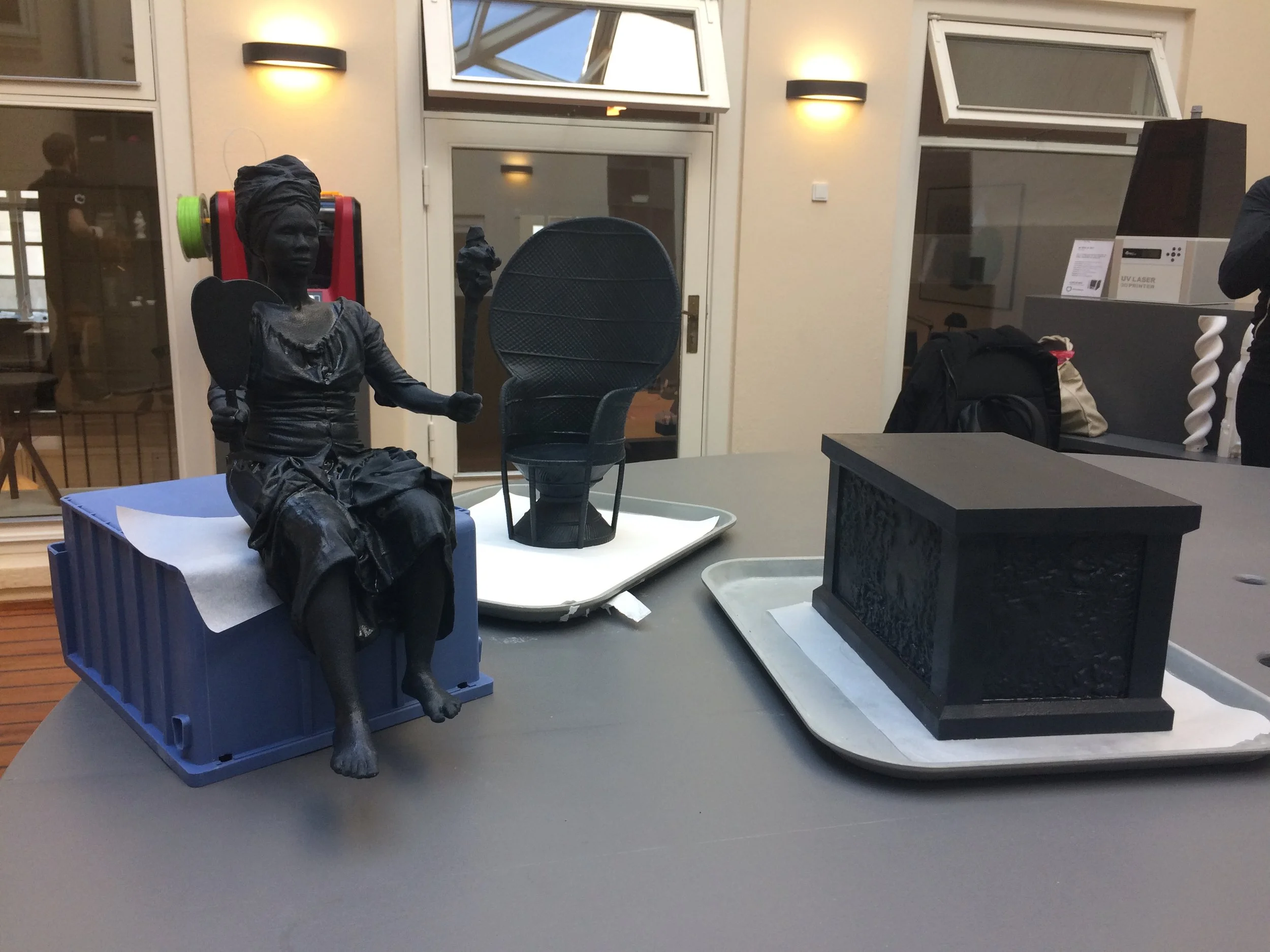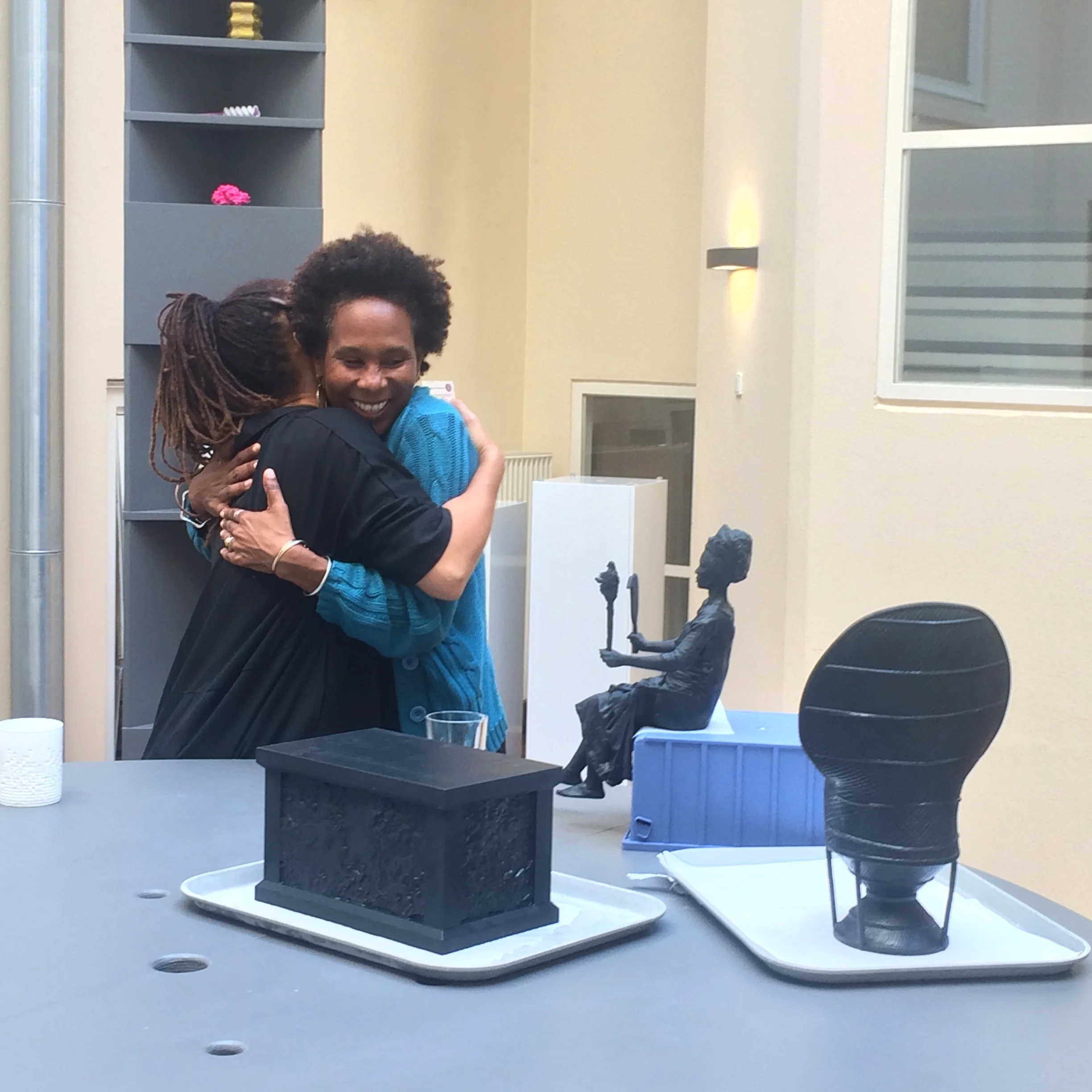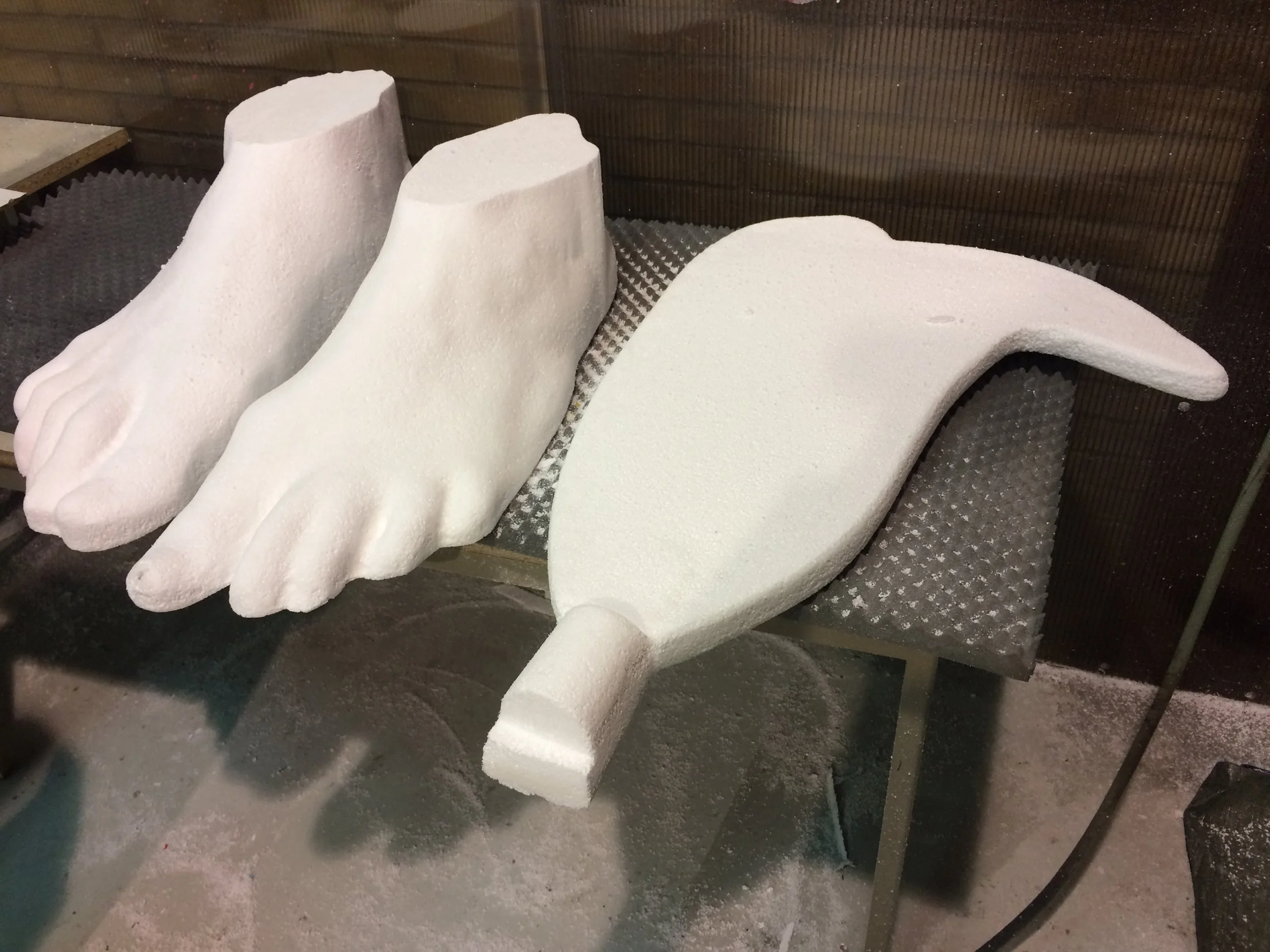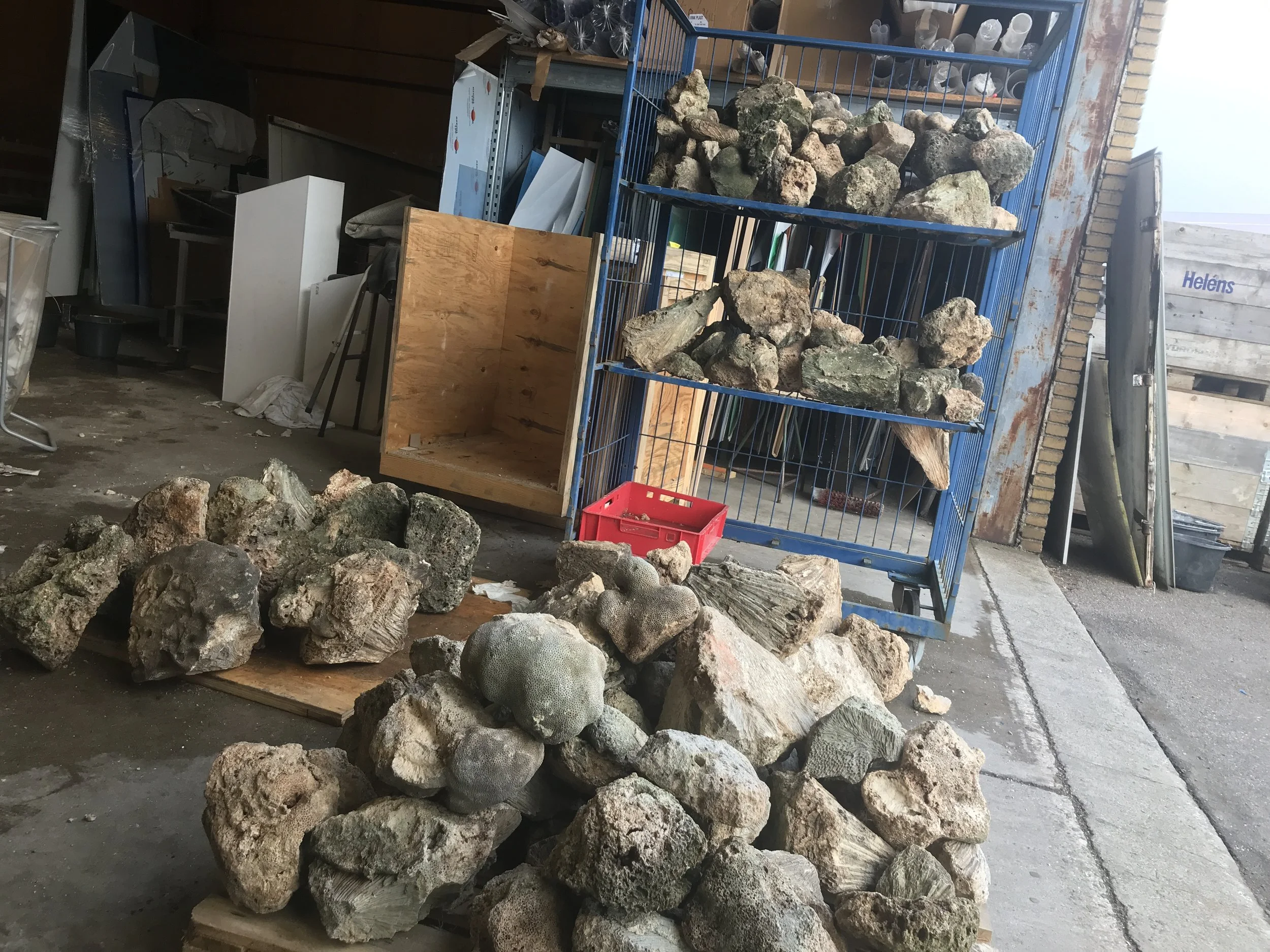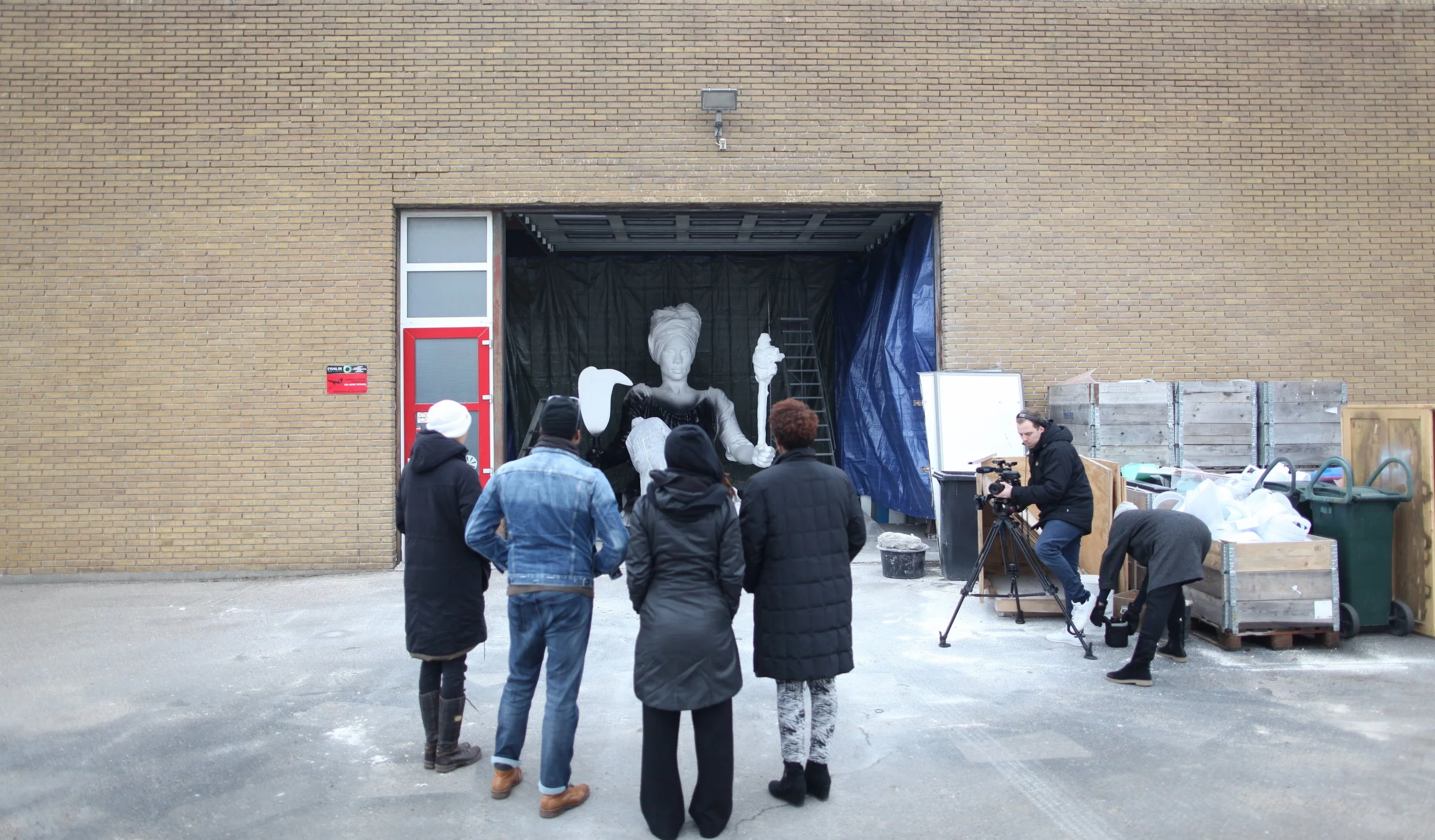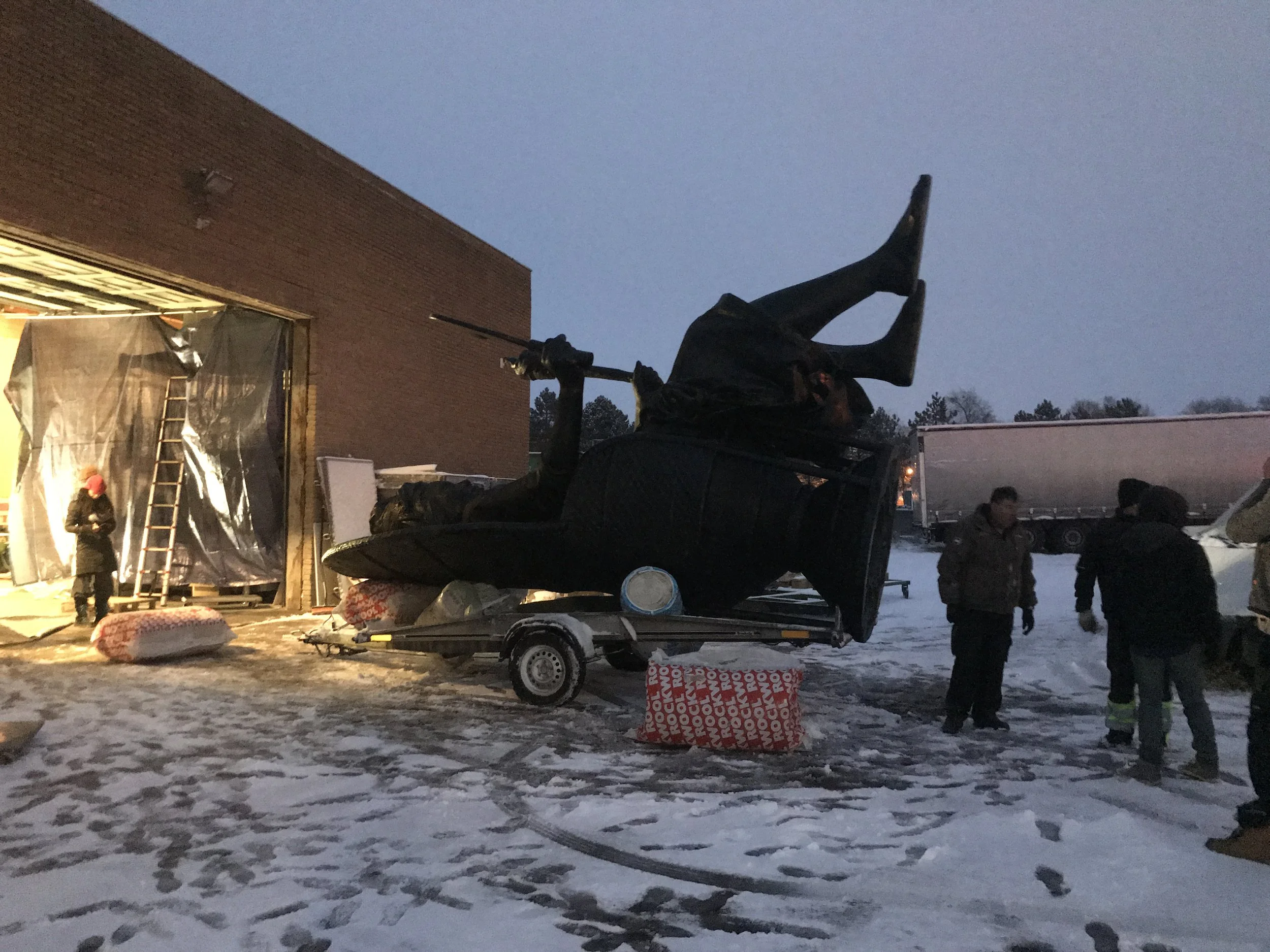I AM QUEEN MARY is a mix of traditional and high tech sculpture techniques. The figure was created using 3D body scanning technology to create a hybrid of Belle and Ehlers' bodies. As a site-specific intervention, the piece is originally conceived to be in conversation with Michelangelo's David sculpture which stands in front of the warehouse. Early renditions show a whip in Queen Mary's hand. This was later changed to a cane bill and a torch to focus more on the resistance strategies used in rebellions.
Belle being scanned as part of the 3D body scanning process.
Belle and Ehlers worked with a team of fabricators and designers during the process of realizing this sculpture. Daviid Ranløv, 3D Printhuset, Teknologisk Institut and Atelier Angheluta collaborated to come up with renderings of "I Am Queen Mary" and 3D printed versions in gesso.
These versions have been printed in a limited edition for exhibition and sale. Additionally, editions of the photographic prints of the 3D rendering process are also available in limited editions.
The sculpture was fabricated at the Wow Factory in Denmark. The figure is milled out of large blocks of polystyrene and then coated in various layers of sealants and paint to create an impenetrable surface.
1.5 tons of coral stones were imported from St. Croix, Virgin Islands to form the plinth. These stones were cut by enslaved Africans who were sent into the ocean to harvest them. They were used in the foundation of many of the historic colonial structures only often exposed when the building has fallen into ruin. The corals were sourced from historic properties owned by Belle. They were shipped across the Atlantic in a two and a half month journey. Upon arrival they were washed in a cleaning solution to remove mold and dirt.
The sculpture was transported in parts to the location and assembled using a crane.







